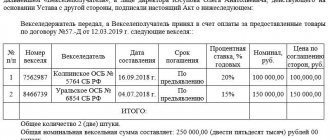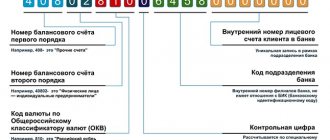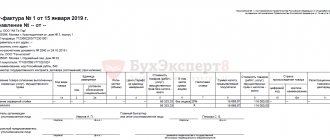Issues discussed in the material:
- What is a simplified tax system?
- Who has the right to apply the simplified tax system
- When can operating companies switch to the simplified tax system?
- How to switch to the simplified tax system correctly
In recent years, the simplified taxation system (STS) has become the most popular preferential tax regime in the Russian Federation. According to statistics from the Federal Tax Service (FTS) of the Russian Federation, more than three million taxpayers today prefer this particular system. How individual entrepreneurs (IPs) or companies can switch to the simplified tax system will be discussed in this article. Here we will look in detail at what and how to do this and in what time frame.
Advantages of switching to simplified tax system
Legal entities, as well as individual entrepreneurs who are at the very beginning of their business activities, can choose one of two tax system options: a general system or a simplified one.
A simplified taxation system is a tax regime that implies a special procedure for paying taxes to the state budget. This system is aimed mainly at representatives of small and medium-sized businesses.
The simplified system has a number of advantages over the general taxation system. In this case, the Tax Code of the Russian Federation allows us to significantly reduce the tax burden, which greatly simplifies the preparation and submission of reports to the Federal Tax Service.
It is very beneficial to use this mode for small industries. In this case, the company will receive the following benefits:
- Less load. Companies do not need to transfer such (for many, very unaffordable) payments as VAT, property tax (there are exceptions - see paragraph 2 of Article 346.11 of the Tax Code of the Russian Federation), and the income tax turns out to be less.
- Selecting an object of taxation (“income” or “income minus expenses”), which allows you to adapt the fiscal burden to the indicators of your economic activity. Even if the company made a mistake in its choice, it can later switch to the second type and change the object of taxation; this can be done at the beginning of the next calendar year.
- Tax rates are not so high, 6 and 15% respectively. According to Art. 346.20 of the Tax Code of the Russian Federation, regional authorities can make these rates even lower. And the subjects of the Russian Federation actively use these powers (in Moscow, for example, for companies using the “income minus expenses” scheme, a rate of 10% is provided - Moscow Law No. 41 dated October 7, 2009).
- If during the period of application of the “simplified tax” fixed assets (FPE) and intangible assets (IMA) are acquired, during the year their cost is included in expenses (clauses 1 and 2 of clause 3 of Article 346.16 of the Tax Code of the Russian Federation).
- Companies keep tax records in a ledger for accounting income and expenses, which is easy to fill out and does not need to be certified by the Federal Tax Service. The tax return is submitted “simplified” only at the end of the calendar year. And when choosing the object of taxation “income”, you can handle the accounting yourself, without an accountant.
The Russian government provides such benefits only to those merchants whose activities are classified as small businesses.
Top 3 articles that will be useful to every manager:
- Accounting services for companies: all the subtleties and nuances
- What to choose LLC or individual entrepreneur: pros and cons of different forms of ownership
- How to open a current account for an individual entrepreneur: choosing the best bank
Who can switch to the simplified tax system and who can’t
In order to work under the simplified tax system (from the moment of opening or for the transition subsequently), entrepreneurs need to meet certain criteria (see table 1). Most of them relate to the scope of their activities, the economy and the size of the business.
To switch to the “simplified” system from 01/01/2019, the amount of the company’s income from the OSN for 9 months of 2021 should not exceed 112.5 million rubles. This does not apply to individual entrepreneurs; they have this opportunity regardless of the size of their income.
The income limit for applying the “simplified tax” in 2021 for individual entrepreneurs and organizations was 150 million rubles. The OS limit for using the simplified system in 2021 is also 150 million rubles.
Table 1
| Index | Limit value | How to count |
| Relevant for individual entrepreneurs and legal entities | ||
| Amount of income received for the reporting (tax) period * | 150 million rub. | Calculate this indicator based on all income from business in “simplified terms”. At the same time, take into account sales revenue and non-operating income. Do not include in the calculation income that is not taken into account under the simplified tax system (Clause 4.1 of Article 346.13 of the Tax Code of the Russian Federation) |
| Average number of employees for the reporting (tax) period | 100 people | Determine the total indicator of the average number of employees, the average number of external part-time workers and the average number of employees who performed work under GPC contracts (subclause 15, clause 3, article 346.12 of the Tax Code of the Russian Federation, clause 77 of the Instructions, approved by Rosstat order No. 428 dated October 28, 2013) . This does not include persons who worked under copyright agreements (letter of the Ministry of Finance of Russia dated August 16, 2007 No. 03-11-04/2/199) |
| Residual value of fixed assets** | 150 million rub. | Calculate the cost according to accounting data (the original cost of the fixed assets minus the amount of depreciation accrued on them). Take into account objects with an initial cost above 100 thousand rubles. (Clause 16, Clause 3, Article 346.12 of the Tax Code of the Russian Federation) Their useful life must be more than 12 months. |
| Relevant only for organizations | ||
| Share of participation of other organizations in the authorized capital of the company on the simplified tax system | 25 % | Determine the share based on an extract from the Unified State Register of Legal Entities (clause 8, article 11 and article 31.1 of the Federal Law of 02/08/98 No. 14-FZ). This restriction does not apply to companies listed in clause 14, clause 3 of Art. 346.12 of the Tax Code of the Russian Federation. For example, for non-profit organizations, including consumer cooperation organizations and business societies, the only founders of which are consumer societies and their unions |
| Availability of branches | 0 | Information about the presence of branches of the company is indicated in its charter (clause 1, clause 3 of Article 346.12 of the Tax Code of the Russian Federation, letter of the Ministry of Finance of Russia dated June 29, 2009 No. 03‑11‑06/3/173). In this case, the company may have representative offices |
* If these conditions are not met from the beginning of the quarter in which the excess occurred, the “simplified” person must return to the general taxation regime (clause 4 of Article 346.13 of the Tax Code of the Russian Federation).
** A limitation on the residual value of fixed assets upon transition is established for organizations and individual entrepreneurs. If the limit on the residual value of fixed assets is exceeded, then the right to use the “simplified tax” is lost (clause 4 of Article 346.13 of the Tax Code of the Russian Federation and letter of the Ministry of Finance of Russia dated January 18, 2013 No. 03-11-11/9).
If even one of these conditions is violated, and also if the type of commercial activity does not correspond to the list permitted for the simplified tax system, you cannot count on the application of a simplified taxation system.
How to switch from general to simplified tax system? Check your performance before applying. When registering a company, it is worth considering whether you will subsequently be able to meet these requirements.
According to Art. 436.12 clause 3 of the Tax Code of the Russian Federation, the following individual entrepreneurs cannot operate on the simplified system:
- producers of excisable goods;
- extracting and selling minerals (except for common and accessible ones);
- those employed in the gambling business;
- agricultural producers transferred to the Unified Agricultural Tax (Chapter 26.1 of the Tax Code of the Russian Federation).
This also includes:
- foreign companies;
- budgetary institutions;
- organizations engaged in banking, microfinance, and insurance activities;
- private recruitment agencies;
- lawyers and notaries;
- investment and non-state pension funds;
- pawnshops;
- professional participants in the securities market;
- gambling organizers.
If a taxpayer goes beyond the limits, does not switch to OSNO on time and applies the simplified tax system without legal grounds for doing so, if this fact is revealed, additional taxes will be assessed on him, as on OSNO. He will pay VAT, profit tax (or income tax), property tax, fines and penalties on these taxes, and will also be required to submit missing declarations and reports.
Transition requirements in 2021
Despite the attractiveness of all the advantages of the simplified tax system from 2021, not every individual entrepreneur can change the format of paying taxes. The main conditions and requirements for companies include:
- maximum income for nine months of the previous reporting year up to 112.5 million rubles;
- residual value of fixed assets as of January 1, 2021 - up to 150 million rubles;
- lack of branches;
- no more than 100 employees on staff;
- the share of third parties in the authorized capital is up to 25%.
We remind you: the coefficient, which takes into account changes in consumer prices, is temporarily suspended until 2021. Standard limits are calculated without it.
The possibility of switching to the simplified tax system in 2021 is not available to banking organizations, insurance companies, non-state pension funds, pawnshops, institutions financed from the state budget and some other firms.
When can you switch to the simplified tax system in 2019-2020?
LLCs or individual entrepreneurs that are not subject to the above restrictions have the opportunity to start working under a “simplified” approach from the very beginning of their activities. To do this, you need to notify the tax authorities about this in a timely manner.
How to switch to the simplified tax system after registering an individual entrepreneur? Within 30 days after making an entry in the Unified State Register of Legal Entities or Unified State Register of Individual Entrepreneurs, you must submit an application to the tax office. You can write it freely or use form 26.2-1. This form contains all the necessary fields to fill out, so it will simplify your work.
If an entrepreneur does not meet the deadline of 30 days from the date of registration, it will be possible to switch to the simplified tax system only from the beginning of next year.
It is not necessary to wait for the entry itself to be made in the state registers of the Unified State Register of Legal Entities and the Unified State Register of Individual Entrepreneurs. It is permissible to send a notification to the Federal Tax Service at the same time as the registration documents. There is no need to indicate TIN and KPP in the notification due to their absence.
If an LLC or individual entrepreneur does not fall under the restrictions specified in Art. 346.12 of the Tax Code of the Russian Federation, you need to fill out a notification in Form 26.1-1 and send it to the tax service.
The timing of the transition to the simplified tax system depends on your previous taxation system.
- Transition from OSNO and Unified Agricultural Tax
Let's consider the question: is it possible to switch to the simplified tax system with OSNO and Unified Agricultural Tax? The answer is as follows: from OSNO and Unified Agricultural Tax you can switch to the “simplified” system only at the beginning of the calendar year. The deadline for sending the notification is December 31 of the previous year.
The notice must indicate:
- Income as of October 1 of the current year. (If the amount exceeds 112.5 million rubles, you will receive a refusal (clause 2 of article 346.12 of the Tax Code of the Russian Federation)).
- Residual value of fixed assets as of October 1 of the current year. How to switch an LLC to the simplified tax system? The rules for the transition to a simplified system for LLCs in 2021 indicate compliance with the income limit of 150 million rubles.
This paragraph of the article talks about organizations; there is no mention of individual entrepreneurs. Thus, entrepreneurs can switch to the simplified tax system without complying with the income limit. There is no need to indicate income for 9 months. Individual entrepreneurs will subsequently be required to comply with an income limit of 150 million rubles. per year in order to reserve the right to apply the simplified tax system.
This limitation is established by clause 16, clause 3 of Art. 346.12 of the Tax Code of the Russian Federation. This only applies to organizations. According to the explanations of the Ministry of Finance, individual entrepreneurs can switch to the simplified tax system without observing the limit on the cost of fixed assets, but in the process of applying the preferential regime they are required to comply with this limit, otherwise they lose this right.
As we have already found out, only organizations indicate the amount of the residual value of fixed assets as of October 1 of the year preceding the transfer to the simplified tax system in notification 26.2-1 for the tax authorities.
After submitting a notification from January 1 of the new year, organizations and entrepreneurs can already work according to the simplified tax system.
- VAT restoration when switching to the simplified tax system from OSNO
Having made the transition from the general regime to the simplified tax system, individual entrepreneurs and LLCs begin to work without value added tax (VAT), and they need to restore it according to the deductions specified in paragraph 3 of Art. 170 of the Tax Code of the Russian Federation.
VAT on goods and materials stored in the warehouse is subject to recovery, fixed assets in proportion to the residual value and advances paid. Only those amounts of VAT that have already been deducted are subject to restoration.
VAT is restored in the tax period that precedes the transition to “simplified taxation”. That is, if an organization begins to apply the simplified taxation system from January 1, 2019, then it needs to restore the VAT amounts in the fourth quarter of 2018.
Income limit
To switch to the simplified tax system from 01/01/2019, the amount of income from sales and non-operating income of the organization for 9 months of 2021 should not exceed 112.5 million rubles (clause 2 of article 346.12 of the Tax Code of the Russian Federation). There is no income limit for entrepreneurs (IEs).
One of the conditions for the application of the simplified tax system by entrepreneurs and organizations is compliance with the annual income limit. In order not to “fly away” from the simplified tax system, revenue under the simplified tax system in 2021 should not exceed 150,000,000 rubles (clause 4 of article 346.13 of the Tax Code of the Russian Federation).
Selecting an object of taxation
It is necessary to clearly define the object of taxation before switching to a simplified taxation system. This is the part of your income on which you will have to pay tax.
There are 2 objects of taxation:
- “Revenue”, that is, the tax will be 6% of the total volume of financial receipts, regardless of expenses - a 15% tax is calculated on the profit that remains after deducting all the company’s expenses.
The choice of object directly depends on the economic activity of the enterprise itself. For example, during the year the Astra studio earns 1.5 million rubles. The cost of the studio's needs is 800 thousand rubles. The same studio "Alliance" has the same 1.5 million per year. But at the same time, he spends significantly less on his own needs, only 300 thousand.
Deadlines and required documents
You should also understand when and how the transition to a simplified system is carried out. The mechanism for registering individual entrepreneurs is simple. A businessman must fill out a form for which form 26.2-1 is provided, recommended for use by the Federal Tax Service of the Russian Federation. Next, the application is submitted to the tax office no later than 30 days after the new entrepreneur is registered. The specified period is fixed in paragraph 2 of Article 346.20 of the Tax Code of the Russian Federation.
For individual entrepreneurs already working under a different taxation system, other rules are provided . The deadline for filing an application for a regime change is December 31 of the current year. Since January, such entrepreneurs have already been registered on the simplified tax system.
How to switch to the simplified tax system in 2019-2020: step-by-step instructions
If you meet all the above conditions, you simply need to notify the tax service of your choice and switch to the simplified tax system. An application in form 26.2-1 is sent to the tax office where the individual entrepreneur or LLC is registered with the tax authorities. Submission deadlines are shown in Table 2.
Table 2. How to switch to the simplified tax system, application deadlines.
| Taxpayer category | Notice deadline |
| Newly registered individual entrepreneurs and LLCs | Simultaneously with submitting a set of documents for business registration or within 30 days after it |
| Existing individual entrepreneurs and LLCs operating in other modes | No later than December 31 of the current year to switch to the simplified tax system from January 1 of the new year |
| UTII payers who have ceased their assigned activities | Within 30 days from the date of deregistration as UTII payers |
At the moment, form 26.2-1 is in force, approved by Order of the Federal Tax Service of Russia dated November 2, 2012 No. ММВ-7-3/829. The form to fill out is very simple.
The transition to a simplified system in 2021 from the general taxation regime is possible only from 01/01/2020.
Let's consider a step-by-step algorithm for switching to the simplified tax system in 2021.
Step one:
To switch from OSNO to simplified tax system from January 2021, you must issue a notification to the tax office. It’s easier to use form 26.2-1.
For downloading there is a blank form and an example of filling out an application on form 26.2-1 about switching to the simplified tax system [pdf files in the folder with photos]:
- Download a blank notification form about the transition to simplified language.
- Notification in form 26.2-1 about the transition to the simplified tax system - an example of filling out for an LLC.
- Notification in form 26.2-1 about the transition to the simplified tax system - an example of filling out for individual entrepreneurs.
We formalize our desire to switch to the simplified tax system with a statement in which you need to indicate:
- the selected object of taxation – “income” or “income minus expenses”;
- residual value of the company's fixed assets as of 01.10. 2018;
- volume of income as of 10/01/2018.
Below is a sample notification of the transition from OSNO to simplified tax system in 2019.
Deadline for submitting notifications for the transition to the simplified tax system from 2021
When making the transition, submit a notification no later than December 31 of the previous year (clause 1 of Article 346.13 of the Tax Code of the Russian Federation).
When creating a new company, submit a notification along with documents for state registration. If you have not done this, you can submit a notification within 30 calendar days from the date of tax registration indicated in the certificate (clause 2 of Article 346.13 of the Tax Code of the Russian Federation). In both cases, your company will be considered to be using the simplified tax system from the date of its registration.
December 31, 2021 is a non-working Monday. Tax offices are closed these days. Therefore, submit your notification for “simplified” starting from 2021 no later than December 29, 2021. This is the last working day of 2021.
If you submit a notification to the Federal Tax Service late, for example, on January 9, 2021, then the transition to the simplified tax system from 2021 will be considered failed. And it will be impossible to apply the simplified tax system.
In what cases can they refuse to switch to the simplified tax system?
Sometimes the Federal Tax Service may refuse an application to switch to a simplified regime. This may happen in the following cases:
- the taxpayer does not meet the requirements prescribed in Art. 26 of the Tax Code of the Russian Federation;
- Tax authorities previously made a mistake by incorrectly certifying the possibility of applying the simplified tax system.
There are no other grounds for refusing to switch to a simplified regime. Other circumstances for refusal are unlawful.
Sometimes the tax office refuses to accept an application to switch to a simplified taxation system at the time of registration of an entrepreneur. This decision is motivated by the fact that the taxpayer has not yet been assigned a state registration number and a main taxpayer number. At the same time, the legal capacity of the individual entrepreneur allegedly did not occur until the end of registration.
There are no restrictions in this regard in the legislation. It is allowed to submit an application to switch to the simplified tax system along with a set of documents for registration. If the case comes to the arbitration court, the decision is always made in favor of the individual entrepreneur.
The law does not limit the taxpayer in choosing the form of application to switch to the simplified tax system. But using the recommended form will help to avoid mistakes, therefore, the fiscal service will have much fewer reasons for refusal.
Types of simplified tax system
Individual entrepreneurs who choose simplified taxation will also have to decide on the type of taxation regime to be used. If for businessmen working for OSNO the interest rate on profit is the same - 13%, and for LLC - 20%, except for some exceptions, then in the simplified tax system it depends on the object of taxation designated by the businessman. When registering an individual entrepreneur, or when switching to a simplified regime, the entrepreneur is offered two system options:
- Income. The organization takes into account the amount of profit and, based on it, determines the amount of tax. You will have to pay no more than 6% of your income. By decision of regional authorities, the rate may be reduced to 1% in accordance with the provisions of paragraph 1 of Article 346.20 of the Tax Code of the Russian Federation.
- Income minus expenses. The tax is collected not from the total profit, but from the actual one, that is, the organization’s expenses are deducted from the total amount. The list of expenses that can be deducted from income is contained in Article 346.15. The tax rate on the remaining amount ranges from 5% to 15%, depending on the resolution of the regional authorities. A similar situation is reflected in paragraph 2 of Article 346.20 of the Tax Code of the Russian Federation.
You can select the mode you like when registering an individual entrepreneur, or when submitting a notification about the transition to a simplified system.
Free consultation with a lawyer on the transition to the simplified tax system>>
Tax base of the transition period
Before starting to apply the simplified taxation system, a company must create a tax base for the transition period. The procedure for determining it depends on how the organization calculated income tax:
- accrual method;
- cash method.
Special rules for the formation of the tax base of the transition period are established only for organizations that determined their income and expenses by accrual. This follows from the provisions of paragraph 1 of Art. 346.25 of the Tax Code of the Russian Federation.
1. Income
In such “transitional” income, companies must include unclosed advances received during the period of application of the general taxation system. This is explained by the fact that under the accrual method, income must be reflected on the date of sale of goods (work, services). The date of payment does not affect the amount of income (clause 3 of Article 271 of the Tax Code of the Russian Federation). When simplified, the cash method is used. With it, income is generated as payment is received, regardless of the date of sale of goods (work, services) on account of which it was received. Such rules are provided for in paragraph 1 of Art. 346.17 of the Tax Code of the Russian Federation.
Advances received for upcoming deliveries during the period of application of the SST are included in the single tax base as of January 1 of the year in which the organization begins to apply the simplified regime (subclause 1, clause 1, article 346.25 of the Tax Code of the Russian Federation). At the same time, take into account the specifics of calculating and paying VAT received as part of advances.
In the future, advances received before the transition to the simplified tax system must be taken into account when determining the maximum amount of revenue that limits the use of the special regime. This follows from the provisions of clause 4.1 of Article 346.13 and clause 1 of clause 1 of Article 346.25 of the Tax Code of the Russian Federation.
In 2021, the maximum amount of revenue that allows you to apply the “simplified tax” is 150,000,000 rubles. (clause 4 of article 346.13 of the Tax Code of the Russian Federation).
Buyers' receivables accumulated during the application of the OSN do not increase the tax base of the transition period. With the accrual method, revenue is included in income as it is shipped (Clause 1, Article 271 of the Tax Code of the Russian Federation). This means that it has already been taken into account for tax purposes. Amounts received to pay off the organization’s receivables after the transition to the simplified tax system do not need to be re-included in the tax base. This is indicated by paragraph 3 of paragraph 1 of Art. 346.25 of the Tax Code of the Russian Federation.
2. Expenses
Those organizations that used the accrual method should include here unrecognized expenses that were paid during the period when the general tax system was applied. This is explained by the fact that with the accrual method, expenses are taken into account on the date of their implementation (clause 1 of Article 272 of the Tax Code of the Russian Federation). The date of payment does not affect the date of recognition of expenses. When “simplified”, the cash method applies (clause 2 of Article 346.17 of the Tax Code of the Russian Federation). With it, expenses are formed as they are paid. Moreover, additional conditions have been established for the recognition of certain types of costs.
Advances issued during the period of application of the general taxation system against future deliveries (excluding VAT) should be included in the single tax base on the date of receipt of goods (work, services). At the same time, take into account the restrictions associated with the write-off of purchased goods and fixed assets. Include paid but unrecognized expenses as expenses as the conditions under which they reduce the tax base for the single tax are met. These rules are provided for in subparagraph 4 of paragraph 1 of Article 346.25 of the Tax Code of the Russian Federation.
The organization's accounts payable for expenses that were taken into account when calculating income tax do not reduce the tax base for the single tax. Amounts paid to repay accounts payable after the transition to the simplified tax system cannot be re-included in expenses. For example, if unpaid goods were sold before the transition to the simplified regime, then there is no need to take their cost into account when calculating the single tax after payment. This is indicated by subparagraph 5 of paragraph 1 of Article 346.25 of the Tax Code of the Russian Federation.
3. Cash method
For organizations that have already used the cash method, a special procedure for generating income and expenses when switching to a simplified system has not been developed. This is due to the fact that such organizations previously recognized their income and expenses as they were paid (clauses 2, 3 of Article 273 of the Tax Code of the Russian Federation). For them, when switching to the simplified tax system, nothing will change.
Here you should pay attention to the procedure for determining the residual value of depreciable property acquired before the transition to the special regime.
If the organization paid for such property and put it into operation before the transition to the simplified tax system, then determine its residual value in the following way. From the purchase price (construction, manufacturing, creation), subtract the amount of depreciation accrued during the period of application of the general taxation system. In this case, use tax accounting data (clause 2.1 of Article 346.25 of the Tax Code of the Russian Federation).
If, before the transition to the “simplified” system, fixed assets or intangible assets were created (purchased, constructed, manufactured), but not paid for, then reflect their residual value in accounting later, starting from the reporting period in which the payment occurred. The residual value must be determined as the difference between the purchase price (construction, manufacturing, creation) and the amount of depreciation accrued during the period of application of the general taxation system.
However, for organizations that calculated income tax using the cash method, the residual value of such property will coincide with the original one. This is due to the fact that under the cash method, only fully paid-for property is depreciated (clause 2, clause 3, article 273 of the Tax Code of the Russian Federation).
When to send reports using the simplified tax system
Tax according to the simplified tax system must be paid every quarter:
- I quarter - no later than April 25;
- II quarter - no later than July 25;
- III quarter - no later than October 25;
- IV quarter (for the year) - the deadline for LLCs is set no later than March 31 of the next year, and for individual entrepreneurs no later than April 30 of the next year.
This applies to transferring money, not filing a return.
The tax return must be filed once a year. LLCs must submit a declaration for 2019 no later than April 2, 2021, individual entrepreneurs no later than April 30.
The declaration is submitted online in the electronic reporting system, taken in person to the tax office or sent by registered mail with a list of attachments.
When an entrepreneur or LLC loses the right to a special regime
If the operating conditions no longer meet the requirements for working on the simplified tax system, the LLC or entrepreneur must switch to OSNO. This occurs when the following limits are exceeded:
- annual income from activities exceeded 150 million rubles;
- the number of hired workers increased and became more than 100 people;
- the residual value of fixed assets has crossed the mark of 150 million rubles;
- the organization has branches and (or) the share of other legal entities in the authorized capital exceeds 25%;
- the taxpayer has engaged in one of the types of activities for which the application of the simplified taxation system is not permitted.
In all of the above cases, individual entrepreneurs and organizations lose the right to work under the simplified system and are considered to be using OSNO from the beginning of the quarter in which the violation or excess occurred, even if this was not immediately detected.
From the beginning of the quarter, it is necessary to recalculate taxes as under OSNO, pay them, submit missing reports for VAT, income tax or personal income tax and property tax. At the same time, there will be no penalties or interest for late payments or late submission of OSNO reports.
The emergence of a separate division in an organization without the characteristics of a branch does not entail the loss of the right to a simplified regime and transfer to the main taxation system. The ban applies only to branches. If a separate division does not have its own balance sheet and is not listed in the Unified State Register of Legal Entities, the organization can continue to apply the special regime legally.
Is it possible to switch to the simplified tax system again if the taxpayer once lost this right?
Yes, such an opportunity is provided, but not earlier than in a year (clause 7 of Article 346.13 of the Tax Code of the Russian Federation), provided that it meets all the requirements for applying the simplified tax system. Get a savings estimate
Who can choose the simplified tax system?
Not everyone can pay taxes under the simplified system. It is necessary to comply with the following legal requirements prescribed in Chapter 26.2 of the Tax Code:
●
annual income should be up to 150 million rubles;
●
the number of staff should be up to 100 people;
●
there are types of activities where the simplified tax system is not possible (for example, banking or mining);
●
there should be no branches;
●
fixed assets limit is no more than 150 million rubles.
If an individual entrepreneur is going to switch, and not initially register, to the simplified tax system from the next tax period, then for 9 months of the current year his income should not exceed 112.5 million rubles.
To switch to the simplified tax system, you must meet all the requirements described above at the same time. If even one point does not apply to you, you do not have the right to pay taxes under the “simplified” tax system.







